
AN EGYPTIAN BRONZE APIS BULL LATE PERIOD, XXVI DYNASTY, CIRCA 664525 B.C. Ancient Art
World History Encyclopedia, 28 Apr 2017. Web. 29 Dec 2023. A limestone Apis bull statue from the Serapeum at Saqqara, Egypt. 30th Dynasty. Height: 1.26 m. (Louvre Museum, Paris)
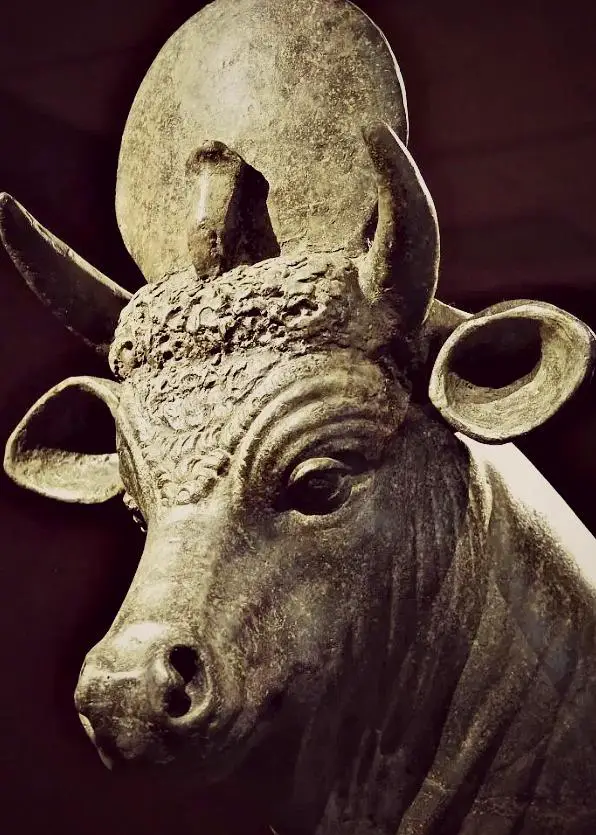
Apis Bull Symbol
Apis is depicted throughout Egypt's history as a striding bull, usually with a solar disc and uraeus (the sacred serpent which symbolized the king's power) between its horns.

Design Toscano Apis, Sacred Bull of Egypt Statue Statue, Design toscano, Goddesses of ancient
Apis: the divine bull of the Egyptian capital Memphis, a manifestation of the god Ptah. Statuette of an Apis bull Already in the most ancient times, the Egyptians venerated bulls, animals that represented fertility. ("Strong bull" was a common title for creator gods and kings.)

AN EGYPTIAN BRONZE FIGURE OF THE APIS BULL, 26TH DYNASTY, 664525 B.C. the sacred bull striding
World History Encyclopedia, 21 Apr 2017. Web. 03 Dec 2023. Remove Ads Advertisement Life-size basalt statue of the Apis Bull dedicated by Hadrian to Serapis in Alexandria (Egypt), Osiris, Sunken Mysteries of Egypt exhibition, Paris (2015)
Egyptian mummified divine Apis bull, 300 BCE 400 CE, displayed in the Smithsonian Museum
The cult of the sacred bull Apis is probably one of the oldest and most prominent cults in ancient Egypt. Evidence for Apis bulls goes back to the first king of the 1st Dynasty, Horus-Aha c. 2900 B.C. 2 The Apis bull was mentioned for the last time in the Panegyric to the Western Roman Emperor Honorius, written by Egypt-born poet Claudian in 398 A.D.

Apis the Sacred Bull of Memphis Bible History
Late Period-Ptolemaic Period. 664-30 B.C. Not on view. The worship of the Apis bull is attested as early as Dynasty I. Arguably the Apis, unlike many sacred animals in Egypt, was not just favored by a certain deity, but was considered a deity in his own right. A single living representative was stabled near the Ptah temple in Memphis.

Apis Bull, Saqqara Serapeum (Illustration) Ancient History Encyclopedia
View the Bull Apis on Pedestal3D for full screen and additional functions. Blending the metaphorical and tangible, Egyptian priests kept and venerated a real bull, Apis in Memphis, where special rituals and reverence were bestowed on an actual animal. It was a focus in the annual seven-day long Apis Festival and important in oracle - prophecy.
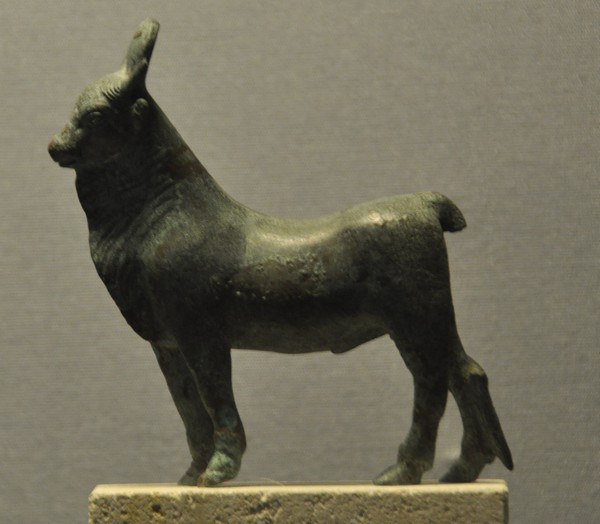
Apis Livius
In Ancient Egypt, Apisor Hapis(alternatively spelt Hapi-ankh) was a bull-deity worshiped in the Memphis region and thought to represent rulership and masculine vigor. Though originally a local deity, his popularity grew throughout the dynastic history, such that, by the Ptolemaic period, he was "a kind of national mascot."

Apis was a sacred bull worshiped in the Memphis region, identified as the son of Hathor, a
The Apis bull was one of three sacred bulls in ancient Egypt. The cult of the Apis bull was so popular and so important to the Egyptians that when the invading Persian king Cambyses (ruled 525-522 B.c.) reached the city of Memphis, he could think of no greater insult than kill and eat the Ap.

Painted limestone statue of the sacred Apis bull, Louvre N 390 (photo... Download Scientific
Ancient Egypt Apis bull was considered sacred and worshiped as a symbol of strength, vital energy and power. The bull was the earthly incarnation of a god, a manifestation of the Memphite creation god Ptah; it was the 'soul (Ba) Ptah' and the 'Herald (whm) of Ptah'.
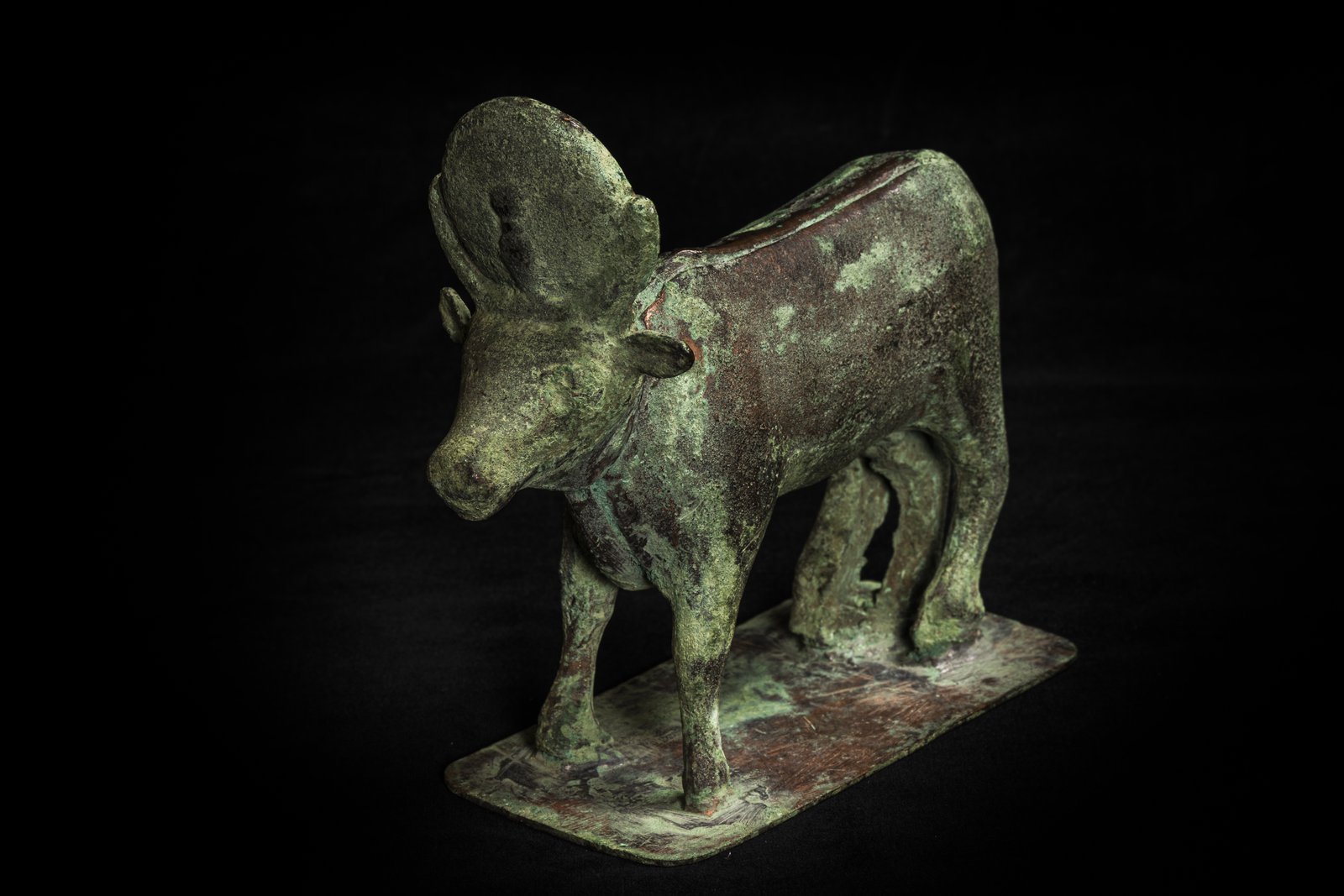
Bull Apis E39829 The Australian Museum
In ancient Egyptian religion, Apis or Hapis , Coptic: ϩⲁⲡⲉ ḥapə), alternatively spelled Hapi-ankh, was a sacred bull or multiple sacred bulls worshiped in the Memphis region, identified as the son of Hathor, a primary deity in the pantheon of ancient Egypt. Initially, he was assigned a significant role in her worship, being sacrificed and reborn.

Statuette of an Apis bull Museum of Fine Arts, Boston
The Apis bull was originally viewed as the manifestation of Ptah. However, the Apis was soon linked to Osiris when Ptah and Osiris merged and so Plutarch described the Apis as the "fair and beautiful image of the soul of Osiris". According to one myth, the Apis was the living embodiment of Ptah while he lived and Osiris when he died.

Lifesize basalt statue of the Apis Bull Apis was the most important and highly regarded bull
Apis Bull: An Important Sacred Animal in Ancient Egypt. Image: Statue of Apis from the 13th dynasty of ancient Egypt The ancient Egyptians were known for worshiping many gods, most of whom were represented by various animals such as cats, dogs, and bulls.
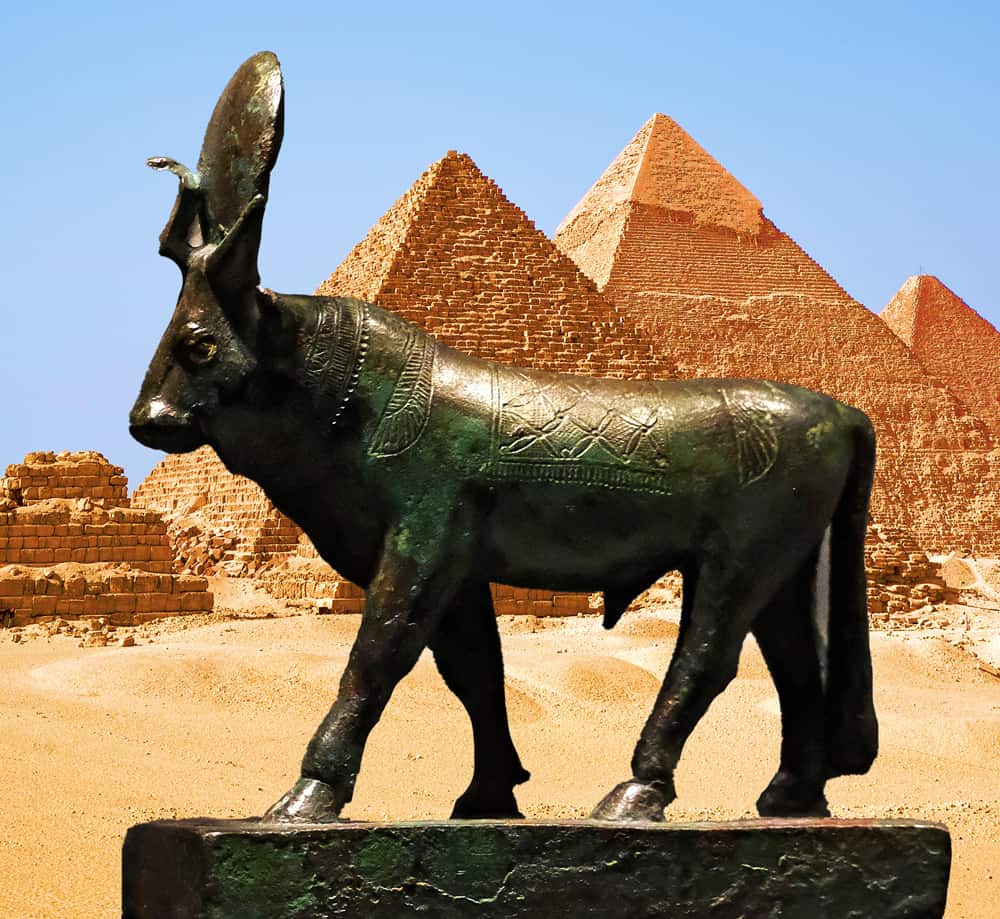
Apis bull god of Egypt Casual English Bible
The Apis bull stands on an oblong base; both the bull and base are decorated with lines and symbols. Two borders encircle the front of the sun disc between its horns, ending at a small impression where a uraeus would have been. The bull has incised lines all over the face and body, some of which still contain inlaid silver. The lines on the stylized face outline the brow, piriform eyes, and.
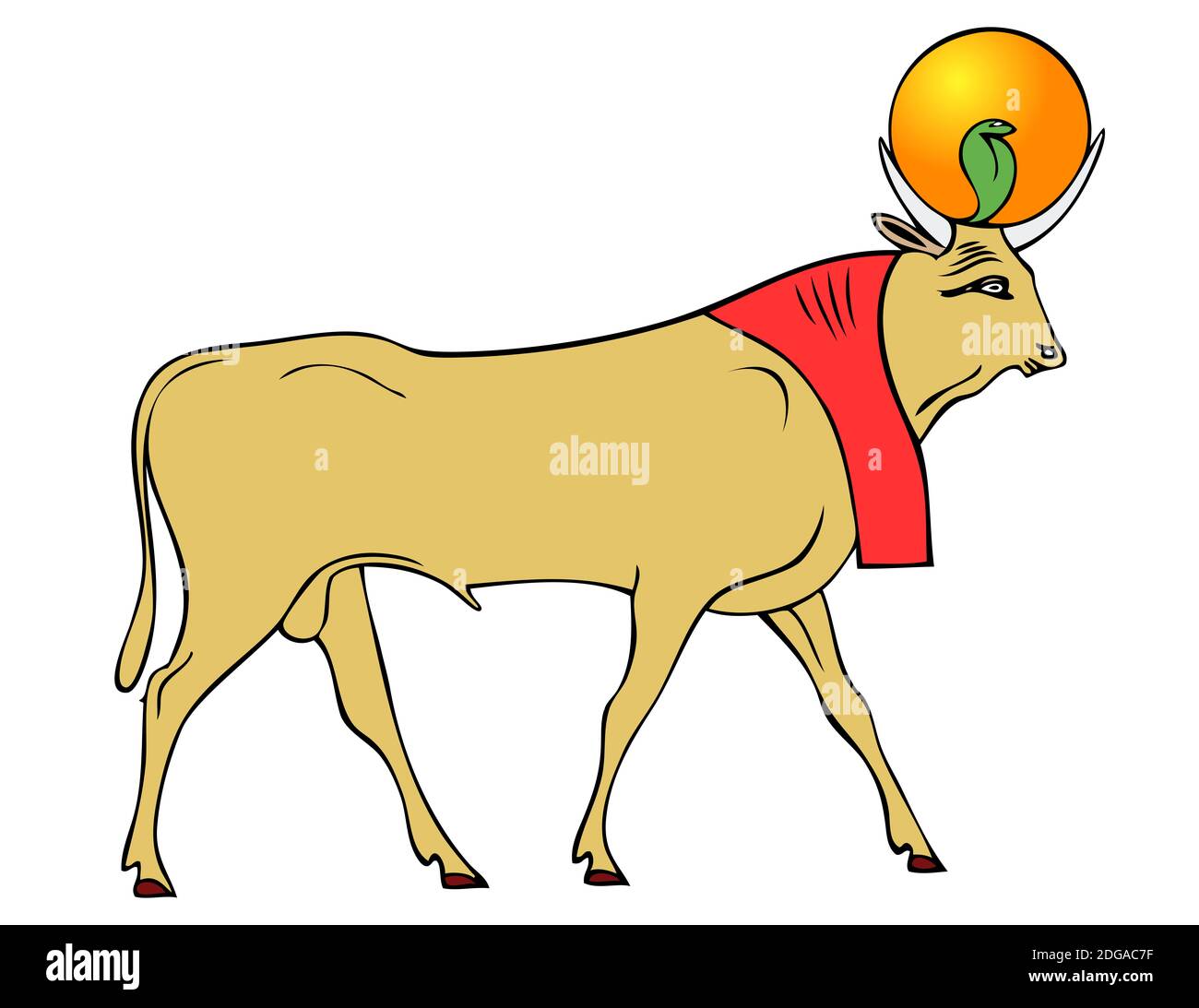
Apis sacred bull of Ancient Egypt Stock Photo Alamy
Apis was typically depicted as a large, black, horned bull with white body markings and a menat collar, which was the sacred necklace of the goddess Hathor. He also wore a radiate sun crown.

Apis Bull The Walters Art Museum
Discover the amazing story of Apis, the divine bull of ancient Egypt, who was born from a ray of light and became the herald of Ptah, the creator god. Follow.